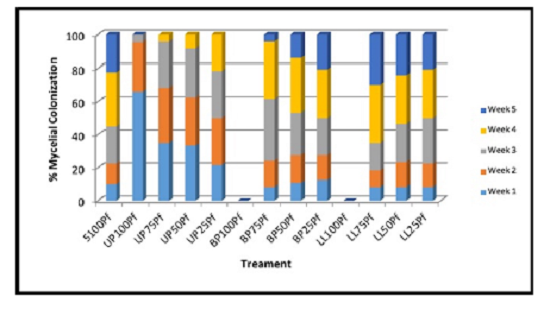


Indian Journal of Science and Technology
Year: 2021, Volume: 14, Issue: 3, Pages: 259-269
Original Article
Lourdes V Alvarez1*, Arcibel B Bautista1
1Department of Biology, College of Science, Polytechnic University of the Philippines, Sta.Mesa, Manila, Philippines
*Corresponding Author
Email: [email protected]
Received Date:07 May 2020, Accepted Date:10 January 2021, Published Date:01 February 2021
Objectives: Urban wastes that contain lignocellulosic substances are potential substrates for mushroom cultivation. The study tested selected urban wastes as substrates for the cultivation of Pleurotus djamor, P. sajor caju, and P. florida. Methods: Three different urban wastes (white used paper, banana peels and mixture of leaf litters) and their combinations were used in the study with sawdust served as the control. Percentage of mycelial growth, colonization period, and number of fruiting bodies, cap diameter, stipe length, total yield, and size of the mushroom and biological efficiency of the substrates used were assessed to determine the effects on growth and yield. Findings: Results revealed that the rapid mycelial colonization where the highest mushroom yield and percentage biological efficiency were observed from UP100 for P.djamor, UP75 for P. sajor caju and BP25 for P. florida and the lowest yield were obtained from those in combinations of leaf litters and banana peels. Novelty: Protocol obtained from this research can be applied and implemented in an urban setting where there are no available agricultural wastes rich in lignocellulosic substances can be used in the cultivation of edible mushroom such as P. djamor, P. sajor caju and P. florida.
Keywords: Oyster mushroom; growth performance; lignocellulose; biological efficiency; mushroom yield
© 2021 Alvarez & Bautista.This is an open access article distributed under the terms of the Creative Commons Attribution License, which permits unrestricted use, distribution, and reproduction in any medium, provided the original author and source are credited. Published By Indian Society for Education and Environment (iSee)
Subscribe now for latest articles and news.